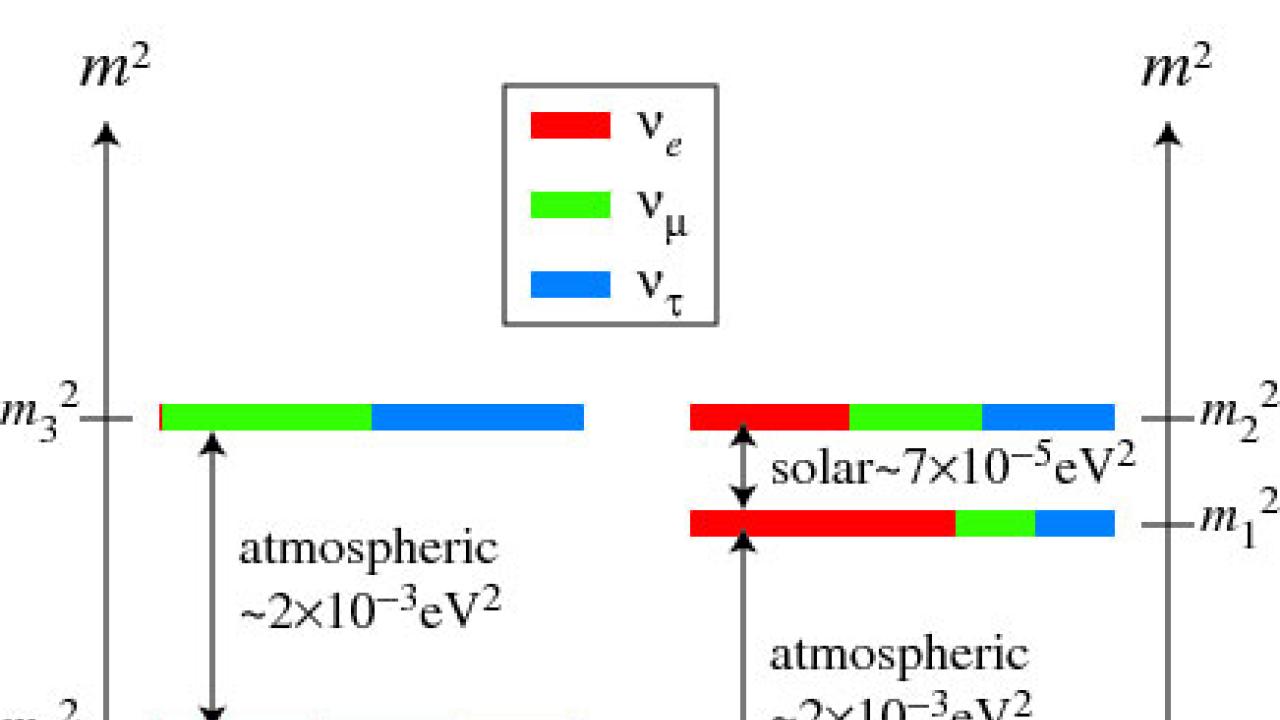
The 2015 Nobel Prize in Physics has put a spotlight on one of the most abundant but elusive particles in the Universe: the neutrino. Created as a result of nuclear reactions, neutrinos are difficult to study because they interact weakly with matter. Nonetheless, scientists have observed and identified the sub-atomic particles thanks to experiments carried out in large detection facilities such as Super-Kamiokande in Japan and Sudbury Neutrino Observatory (SNO) in Canada--the two that produced the 2015 Nobel Prize-winning discoveries about neutrinos.
Specifically, this year's Nobel Prize in Physics rewarded work that proved neutrinos change "identities", oscillating as they travel from their source to neutrino detectors on Earth. This finding solved a puzzle that had stumped physicists for years: why were the number of detected neutrinos from sources such as the Earth's atmosphere or the Sun lower than the theoretical calculations given? The discovery means that neutrinos, which are assumed to be massless in the Standard Model of particle physics, do have mass, albeit miniscule. Furthermore, the discovery implies that neutrinos mix: that is, neutrinos with definite masses have a composite flavour made of electron, muon and tau neutrinos. This is a historic insight for particle physics.
Yet there is still much to be learned about neutrinos. For example, why is their mass so small? What is the mass hierarchy, or ordering, of the three neutrinos: is the neutrino with the smallest mixture of the electron flavour the heaviest or the lightest one? What role could neutrinos have played during the birth of our universe?
Neutrino expert Alexei Smirnov, of ICTP's High Energy, Cosmology and Astroparticle Physics section and the Max-Planck Institute for Nuclear Physics, shed some light on these questions in a recent interview. Smirnov's theoretical work on solar neutrinos has influenced the Nobel Prize-winning neutrino-detection experiments in Japan and Canada, as well as at other detectors.
The past few decades have seen important advances in our knowledge of neutrinos, from their first detections in 1956 to the recent proof of their chameleon-like behavior. One of the next big challenges, according to Smirnov, is to determine the precise values of neutrino masses, including the mass hierarchy. He explains that with the help of the one-cubic-kilometer IceCube neutrino detector at the South Pole this could be possible. That detector is due for an upgrade that will increase the array of particle sensors that could be used to identify the mass hierarchy. "After various experiments, we have established quite precisely the range of mass, but we still don't know the absolute scale of neutrino mass," says Smirnov, adding, "We know that it's very small, say 10 millions times smaller than electron mass, or 10 billion times smaller than the mass of the proton."
Cosmological observations may be another way that physicists can determine neutrino mass, although Smirnov says the results are not robust enough yet to add to the knowledge of mass hierarchy, and cautions that cosmological measurements contain a number of ambiguities. "You may see some effect and think this is due to neutrino mass, but it may be due to something else. To disentangle effects of different origin is a very real problem for cosmology."
In addition to providing clues to the mass of neutrinos, detectors such as IceCube may soon reveal other secrets about neutrinos, such as indications of a new species of the elusive particle that physicists are calling light sterile neutrinos. Sterile neutrinos, which were hypothesized by scientists studying, in particular, neutrinos produced by nuclear reactors, have much weaker interactions than usual neutrinos. Confirmation of their existence may shed some light on the nature of dark matter. But there is some new skepticism related to sterile neutrinos, Smirnov says, partly because, "Experimentalists realized that we do not understand well the spectrum of neutrinos from atomic reactors, in spite of the fact that we have been using these fluxes since the mid-1950s." He continues, "One of the indications of the existence of sterile neutrinos comes precisely from these reactor experiments. If you do not understand quite well the fluxes, then the effects which are attached to these sterile neutrinos could be just because of bad knowledge of fluxes or some features of the detection which we do not understand well. The question remains open."
An increased knowledge of neutrinos could lead to a better understanding of how our universe evolved. For instance, it could help to explain the asymmetry between matter and antimatter. "One of the most beautiful ideas about the birth of the universe is that, in the very early moments of time, there was symmetry between matter and antimatter," says Smirnov. "During the evolution of the universe, this asymmetry developed. The idea is that the first asymmetry was created in neutrinos and charged leptons (electrons, muons and tau leptons), and then it was transferred partially to asymmetry in baryons , quarks and antiquarks. It's a chain, and it is not trivial to check the theory behind this. If we measure neutrino parameters it helps to some extent, but I am not sure that will be conclusive nor established very soon."
Meanwhile, Smirnov and many other particle physicists continue to follow developments at neutrino detectors around the world in the hopes that more pieces of the neutrino puzzle will fall into place. Some answers could come quickly: Smirnov says that results from IceCube's sterile neutrino experiments could be announced in a few months. Other answers may not be so forthcoming. Referring to the decades it took scientists to detect neutrinos after they had been hypothesized, Smirnov observes, "In neutrino physics, things are not developing extremely fast, but the last 17 years were probably an exception."
















